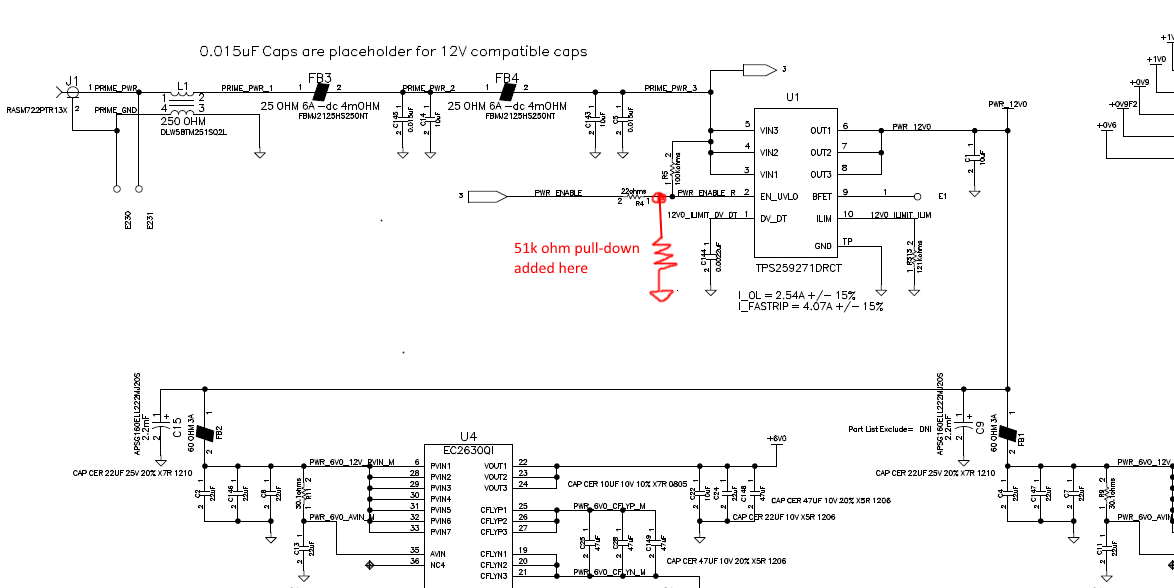I have implemented the TPS259271 in a new design, and I am in the process of bringing up the newly built boards.
I have another device driving the EN/UVLO pin with an open collector driver and a 100k pull-up to 12V at the TPS259271. EN/UVLO is held low until a user button is pressed.
The TPS259271 appeared to be functioning normally, but after repeated power cycles where the power is being enabled only for less than a second, the device stopped responding to the enable signal.
The resistance measured to ground at the EN/UVLO pin was less than 20 ohms, and the pull-up was no longer able to pull the signal above the 1.4V threshold.
This was observed on two units, and a careful review of the datasheet revealed that the maximum voltage on this pin should be <6V. This was my mistake.
So I modified a third unit to implement a voltage divider at the EN/UVLO pin using a 51k ohm pull-down and 100k ohm pull-up to 12V. I verified the resistances after the rework in the powered off state.
On the very first power-on, the TPS259271 failed to pass power through the e-Fuse, and the node now measures <10 ohms to ground in the powered off state.
Can you provide any additional guidance on how to get this circuit to work? Once this input stops functioning, I assume that some irreversible damage has occurred. Can you confirm?
Thank you,
Todd


